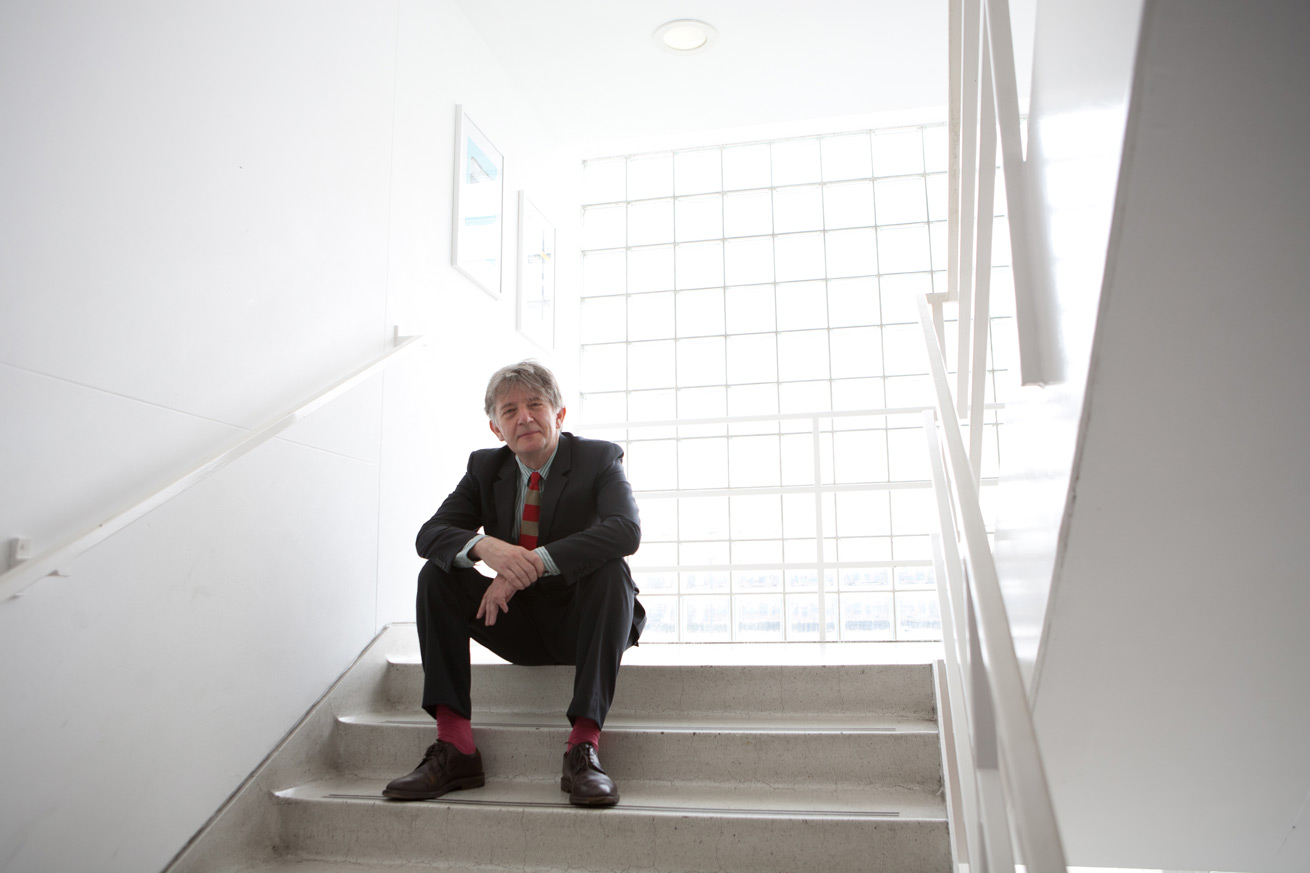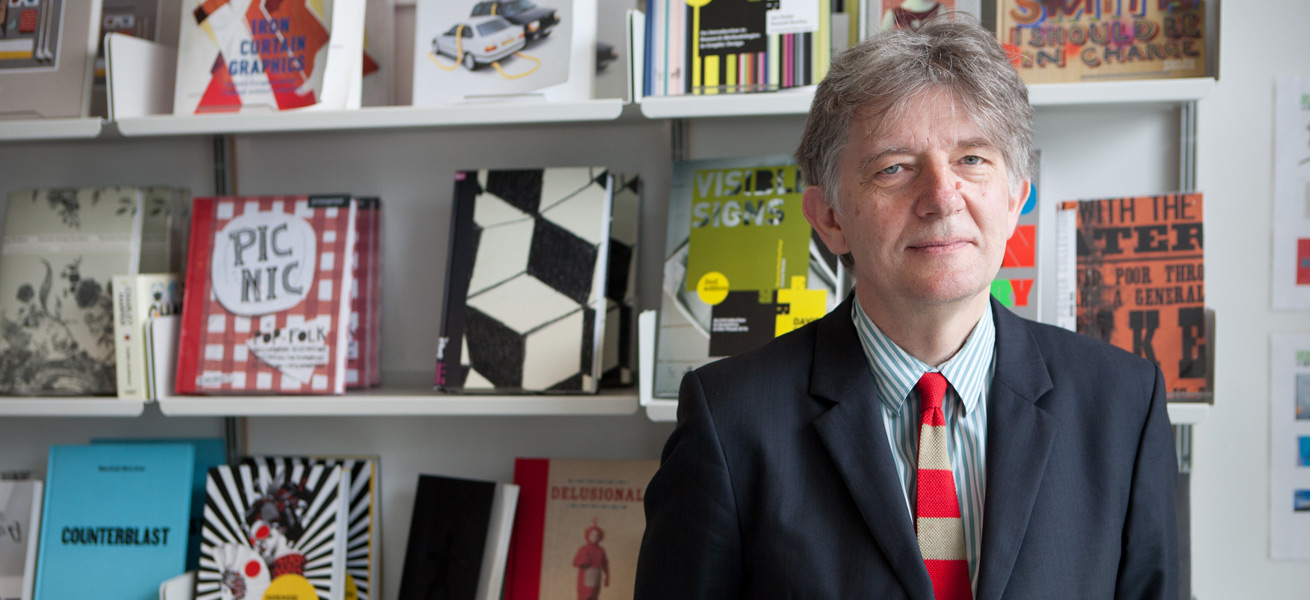Interview by Anna Bates
Photography by Hege Saebjornsen
This year, eight Dutch design studios were nominated for the Designs of the Year prize at the Design Museum in London; among them a land mine detonator, a conference exploring ‘What Design can Do’, and a speculative project that imagines a present without oil, through a series of vessels made of natural polymers. Anna Bates spoke exclusively for Connecting the Dots to Deyan Sudjic, the museum’s director, about the changing landscape of Dutch design. Or, at least, she tried to. Is it relevant to speak of ‘Dutch design’ or ‘British design’ today? Do these terms actually mean anything?
Anna Bates · How do you choose what is ‘good’ design? How do you decide what goes on a pedestal?
Deyan Sudjic · We are in an agnostic era. People are anxious of using terms like ‘good design’ and ‘bad design’. But when you show something in a magazine or museum, it is seen as an endorsement. So how does one introduce a nuance there? It’s difficult. I think that this is not a museum of ‘good design’, but a museum that tries to look at contemporary design – in particular mass-produced design – to make sense of it. I keep repeating a phrase, which I think Paola Antonelli first used: ‘design is a way to understand the world around us’. I think this is a very powerful idea.
AB · Is this your ethos as director of the museum?
DS · Yes, I wrote a book called ‘The Language of Things’ around the same time that I became director of the Design Museum, and it’s a manifesto of sorts: a bit of the intellectual knowledge that goes into the museum. But the Design Museum is not mine; it’s a platform for many viewpoints. I always think of the museum as being like a multiplex cinema, it needs to have different shows and qualities: you need art-house and blockbuster.
AB · One of the nominations for the Design Museum’s Designs of the Year prize was a conference in Amsterdam: ‘What Design Can Do’. The designers that organised the event claim ‘design thinking’ can be used as ‘a response to the challenges of today’s world’. Do you agree?
DS · I took part in the conference and I sort of enjoyed it. It seemed a little innocent in its beliefs. Deep down there is a system idea that if you analyse a problem carefully enough, there is a design answer to it. But I never really believed that, because some things are intractable. There are not solutions to everything. It’s a bit like the idea of psychoanalysis: if you put a problem into words, that somehow solves the problem, but I don’t think this is true. Would I go again? Probably not, it’s a theatrical event. The really great conferences they had in Holland about design were in the 90’s, when John Thackara was doing ‘Doors of Perception’; that was amazing. He was really thinking about the subject before it became mainstream, and he really understood it.

Design Museum London
AB · Designers in the new generation are increasingly interested in the claims of the conference; that design can be socially and politically motivated. The output of this line of enquiry is more often systems than things; will you address this work in the museum, and if so, how?
DS · The museum is not only about exhibitions. We have a teaching programme here from primary to postgraduate; residencies; talks and other different ways of looking at things. The worst thing a museum can do is become predictable, and what interests me about design is that it keeps on changing its shape. Fifty years ago a design museum could have told a story in a selection of well chosen chairs, which would trace the history of technology; people’s approach to the act of sitting; the architectural languages expressed through the chairs. I still have a collection of chairs – personally and here – but design is about much more than just these things. If design didn’t keep changing its definition it would become as marginal as bookbinding.
AB · What do you think is lacking in design discourse now?
DS · I think we need more research. On the one hand we know that an iPhone lasts eight months and depends on strip-mining lithium from the high deserts in Chile. On the other hand it does away with a telephone, music system, camera, GPS. It does away with packaging, transport, shipping etc. So we need to work out whether this could be the guilt-free consumption Reyner Banham and the Independent Group were interested in or whether it is really an evil. There was a very strong piece at the Design Biennale in South Korea last year, which was doing exactly this; it presented how an iPhone is made and sourced. But really this kind of research is beyond the scale of an individual; it requires the effort of universities. Unless we get to the root of things we might be doomed to make a huge effort to recycle without much purpose.
AB · Do you think it should be part of the work of the designer, to pay as much attention to the process of how things are made, as the final outcome?
DS · I think the good ones do. Vitra doesn’t want to put poisonous pigments into its supplies so it chooses to make things in different ways, but of course if you manufacture in eight different factories around the world, how do you keep track?
AB · How would you compare design values in the UK and the Netherlands?
DS · I am always cautious about seeing national characteristics in design, it can quickly degenerate into stereotyping. Look, for example, at how inappropriate it is to describe what Jonathan Ive does as ‘British design’ simply because he is British. It’s equally problematic to call it American design. Apple puts it well when it prints the words designed in California on the side of the box. What is inside is assembled in Shenzhen from components made in a dozen different factories all around the world.

Deyan Sudjic
To British eyes the Netherlands is a country which initially seems very familiar; both have a queen as a head of state; both are beer drinking and football loving; both have lots of 18th century brick terraces with sliding sash windows. But in fact the superficial similarities conceal utterly different characteristics. The Netherlands depends on an almost Japanese social cohesion that the British have trouble with. They live very close together with big windows; you see your neighbours all the time, which is rather un-British.
AB · Do you think this characteristic is reflected in Dutch design?
DS · What has come to be called Dutch design is better called design in the Netherlands, which is the product of some well publicised educational experiments, and the residual afterglow of a state that once felt obligated to reflect certain cultural values for example, through the design of the PTT, and the Pre Euro banknotes.
This interview was published in Connecting the Dots #5 for the London Design Festival in 2012.
For entire magazine click here.













